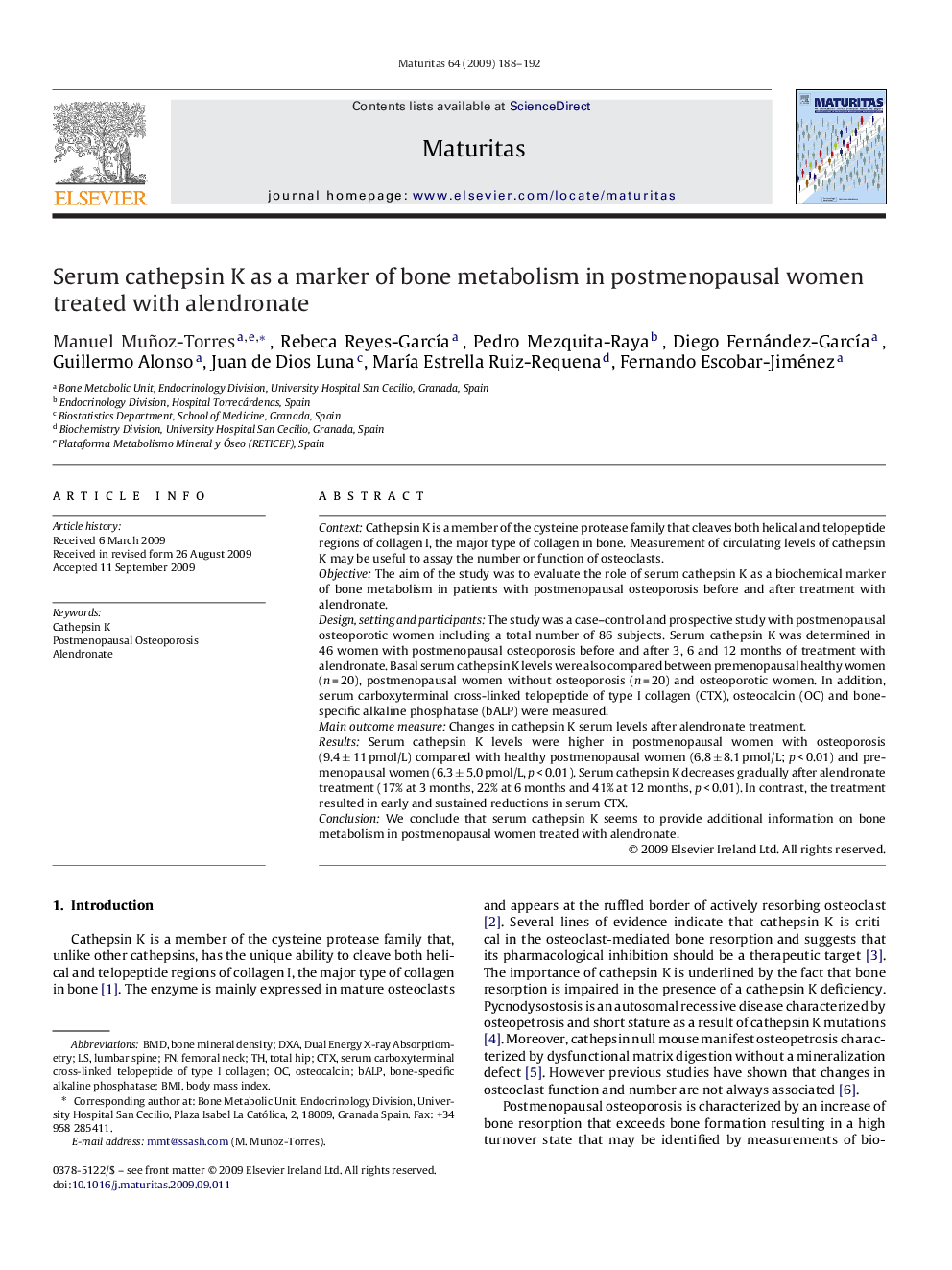| Article ID | Journal | Published Year | Pages | File Type |
|---|---|---|---|---|
| 1918342 | Maturitas | 2009 | 5 Pages |
ContextCathepsin K is a member of the cysteine protease family that cleaves both helical and telopeptide regions of collagen I, the major type of collagen in bone. Measurement of circulating levels of cathepsin K may be useful to assay the number or function of osteoclasts.ObjectiveThe aim of the study was to evaluate the role of serum cathepsin K as a biochemical marker of bone metabolism in patients with postmenopausal osteoporosis before and after treatment with alendronate.Design, setting and participantsThe study was a case–control and prospective study with postmenopausal osteoporotic women including a total number of 86 subjects. Serum cathepsin K was determined in 46 women with postmenopausal osteoporosis before and after 3, 6 and 12 months of treatment with alendronate. Basal serum cathepsin K levels were also compared between premenopausal healthy women (n = 20), postmenopausal women without osteoporosis (n = 20) and osteoporotic women. In addition, serum carboxyterminal cross-linked telopeptide of type I collagen (CTX), osteocalcin (OC) and bone-specific alkaline phosphatase (bALP) were measured.Main outcome measureChanges in cathepsin K serum levels after alendronate treatment.ResultsSerum cathepsin K levels were higher in postmenopausal women with osteoporosis (9.4 ± 11 pmol/L) compared with healthy postmenopausal women (6.8 ± 8.1 pmol/L; p < 0.01) and premenopausal women (6.3 ± 5.0 pmol/L, p < 0.01). Serum cathepsin K decreases gradually after alendronate treatment (17% at 3 months, 22% at 6 months and 41% at 12 months, p < 0.01). In contrast, the treatment resulted in early and sustained reductions in serum CTX.ConclusionWe conclude that serum cathepsin K seems to provide additional information on bone metabolism in postmenopausal women treated with alendronate.
